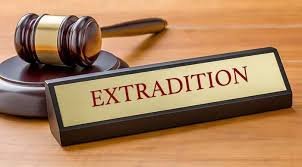
Understanding the Wrongful Death Lawsuit Process: A Comprehensive Guide
The loss of a loved one is one of the most devastating experiences a person can face, especially when that loss is due to someone else’s negligence. If you believe that your loved one’s death was caused by wrongful acts, you may be considering a wrongful death lawsuit. This article will delve into the wrongful death lawsuit process legal steps in fatal accident cases to help you understand what to expect and how to prepare.
What is a Wrongful Death Lawsuit?
A wrongful death lawsuit is a civil action initiated by the heirs or estate of a deceased person against the party deemed responsible for their death. This type of lawsuit is typically based on the principle of negligence, where it is proven that the responsible party failed to act in a manner that a reasonably prudent person would have under similar circumstances.
Common Causes of Wrongful Death
There are numerous circumstances that can lead to a wrongful death claim, including:
- Car accidents caused by negligent drivers.
- Medical malpractice due to improper care or errors by healthcare providers.
- Product liability cases involving defective or dangerous products.
- Workplace accidents resulting from safety violations.
- Criminal acts leading to a fatal outcome.
Who Can File a Wrongful Death Claim?
The individuals who are entitled to file a wrongful death claim may vary by jurisdiction. Typically, the following parties can bring a lawsuit:
- The deceased person’s spouse.
- The deceased person’s children.
- The deceased person’s parents or guardians.
- In some cases, distant relatives or the estate of the deceased may file.

The Wrongful Death Lawsuit Process
Understanding the wrongful death lawsuit process can be daunting, but it typically involves several key steps:
1. Consultation with an Attorney
The first step in the wrongful death lawsuit process is to consult with an experienced attorney. A qualified lawyer can help assess your case, guide you through the intricacies of the law, and assist in gathering the necessary documentation to support your claim.
2. Investigation and Evidence Collection
Once you have retained an attorney, the next step is a thorough investigation. This may involve:
- Collecting police reports and medical records.
- Interviewing witnesses who may provide critical testimony.
- Gathering evidence that demonstrates negligence or misconduct.
- Consulting with experts to establish the basis of liability.
3. Filing the Lawsuit
If sufficient evidence is gathered to support your claim, your attorney will file a formal complaint in the appropriate court. This document will outline the details of the case, the parties involved, and the legal grounds for the lawsuit.
4. Discovery Phase
After filing the lawsuit, both parties enter a phase called discovery, where they exchange information and gather additional evidence. This can include:
- Depositions of parties involved and witnesses.
- Interrogatories (written questions) that must be answered under oath.
- Requests for documents that are relevant to the case.

5. Settlement Negotiations
Throughout the lawsuit process, there may be opportunities for negotiation and settlement. Many wrongful death cases are settled out of court, allowing parties to avoid the stress and unpredictability of a trial. Your attorney will advocate for your best interests during these discussions.
6. Trial
If a settlement cannot be reached, the case will proceed to trial. During the trial, each side presents its evidence, and a judge or jury determines the outcome based on the facts of the case. It’s crucial to have a proficient attorney representing you to ensure that your case is effectively presented.
7. Verdict and Appeal
After the trial, the judge or jury will render a verdict. If the verdict is in your favor, you may be awarded damages. In some cases, the opposing party may choose to appeal the decision, leading to further legal proceedings.
Types of Damages in Wrongful Death Cases
If your wrongful death lawsuit is successful, you may be entitled to various types of damages, including:
- Economic damages: Covering lost wages, medical expenses, funeral costs, and loss of benefits.
- Non-economic damages: Covering pain and suffering, loss of companionship, and emotional distress.
- Punitive damages: In rare cases, awarded to punish the defendant for egregious behavior.
The Importance of Time Limits
It’s crucial to be aware of the statute of limitations for filing a wrongful death claim in your jurisdiction. These time limits can vary significantly, and missing the deadline can result in losing the right to pursue your claim.
Conclusion
Understanding the wrongful death lawsuit process is essential for anyone considering this legal path. By consulting with an experienced attorney and being aware of the steps involved, you can navigate this challenging process more effectively. The experience of losing a loved one is never easy, but with the right knowledge and legal support, you can seek the justice and compensation you deserve.
